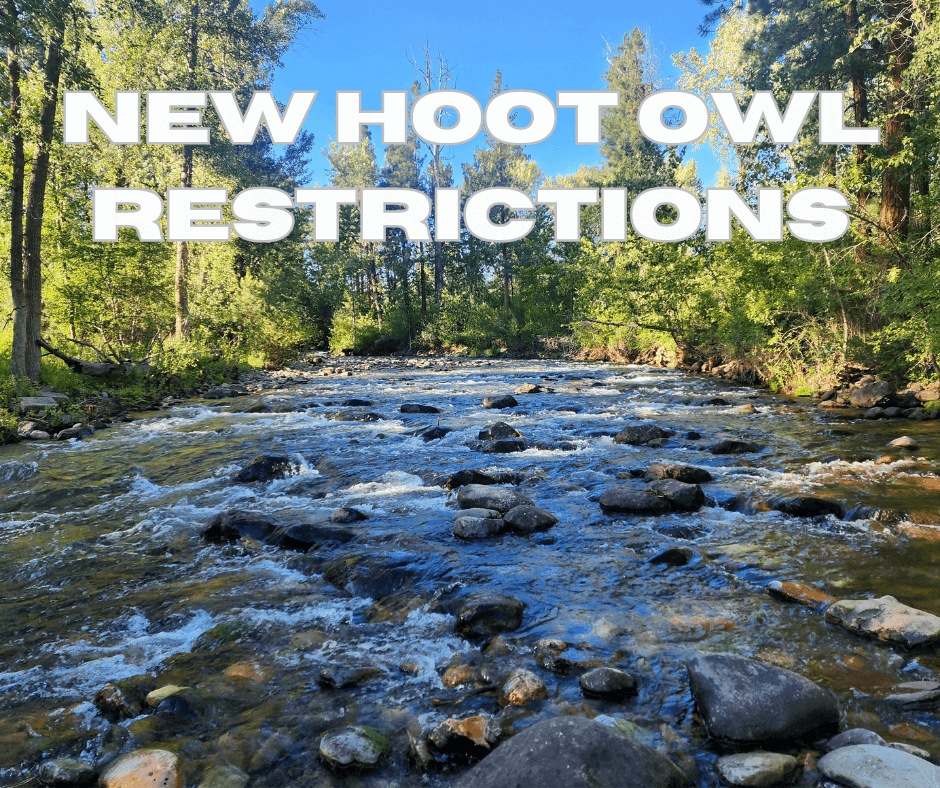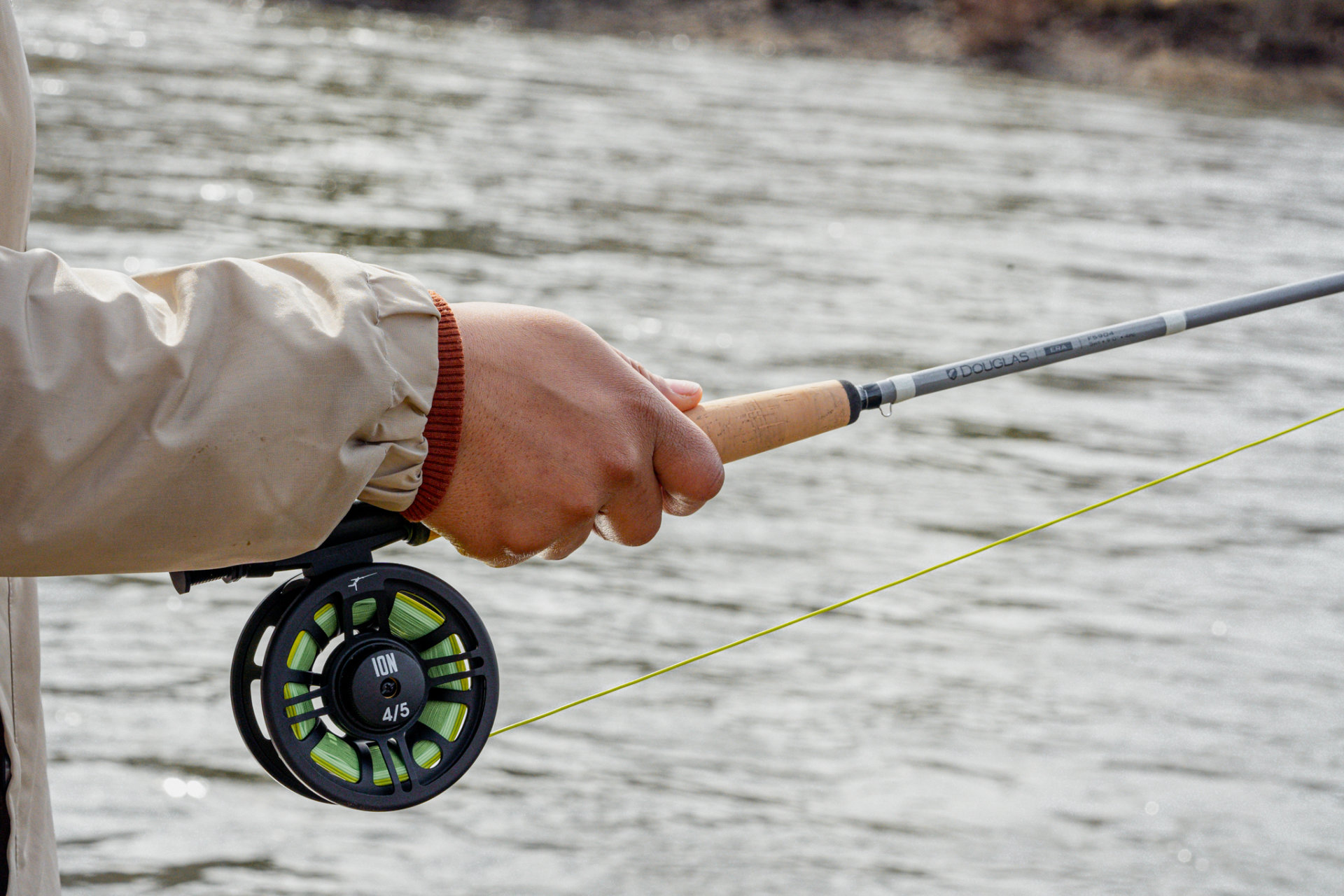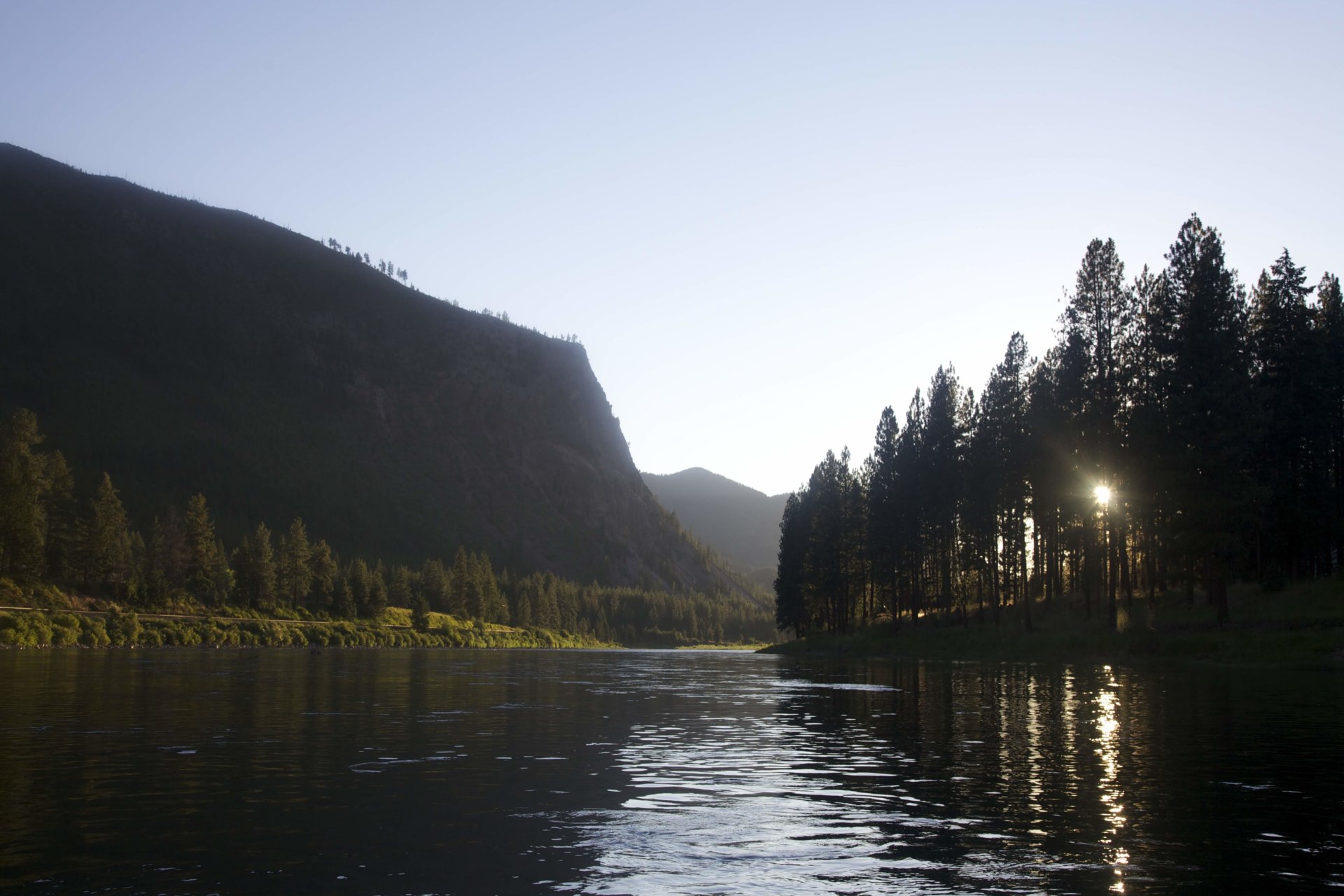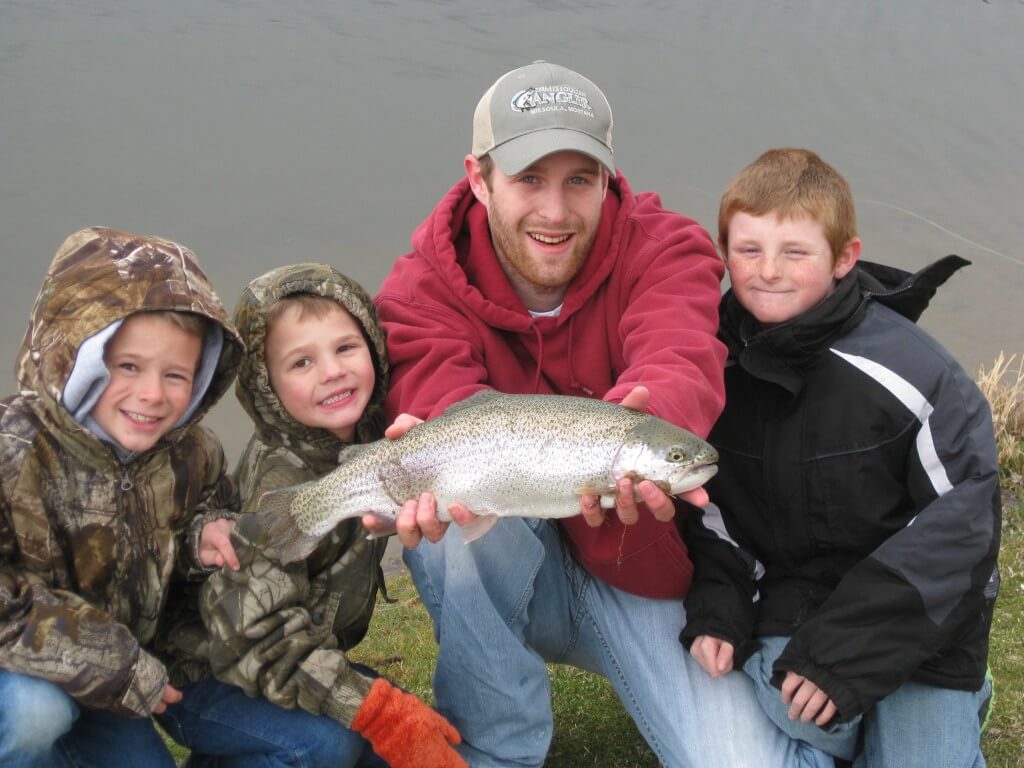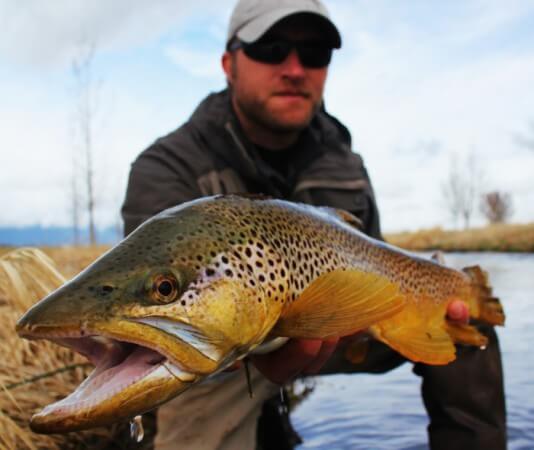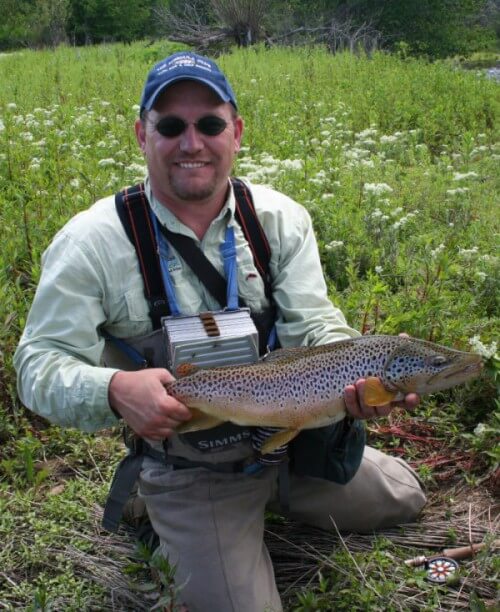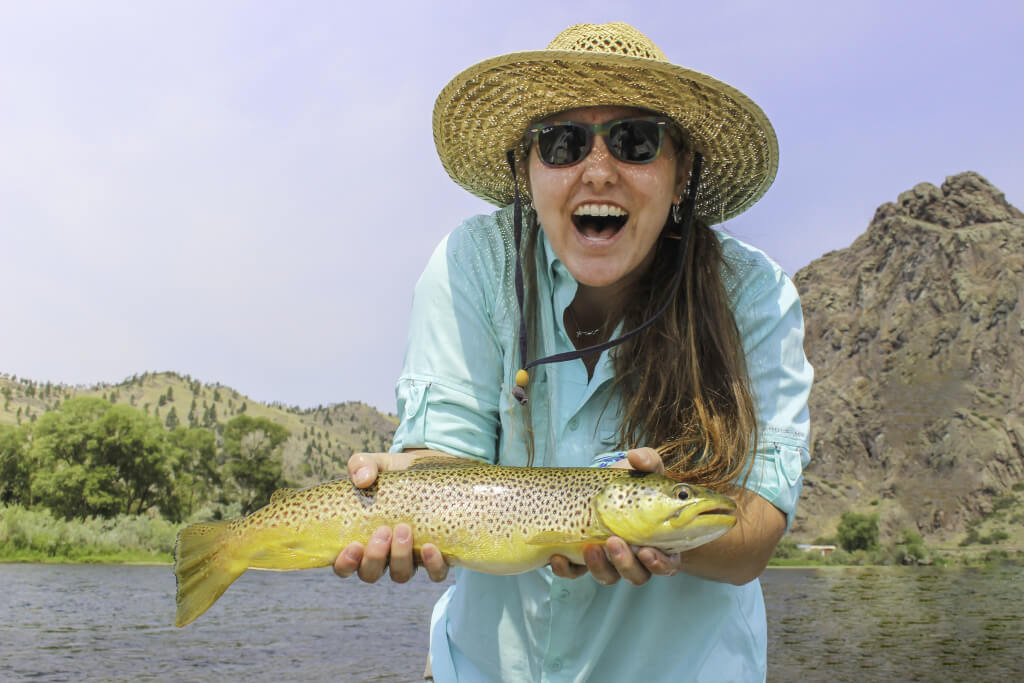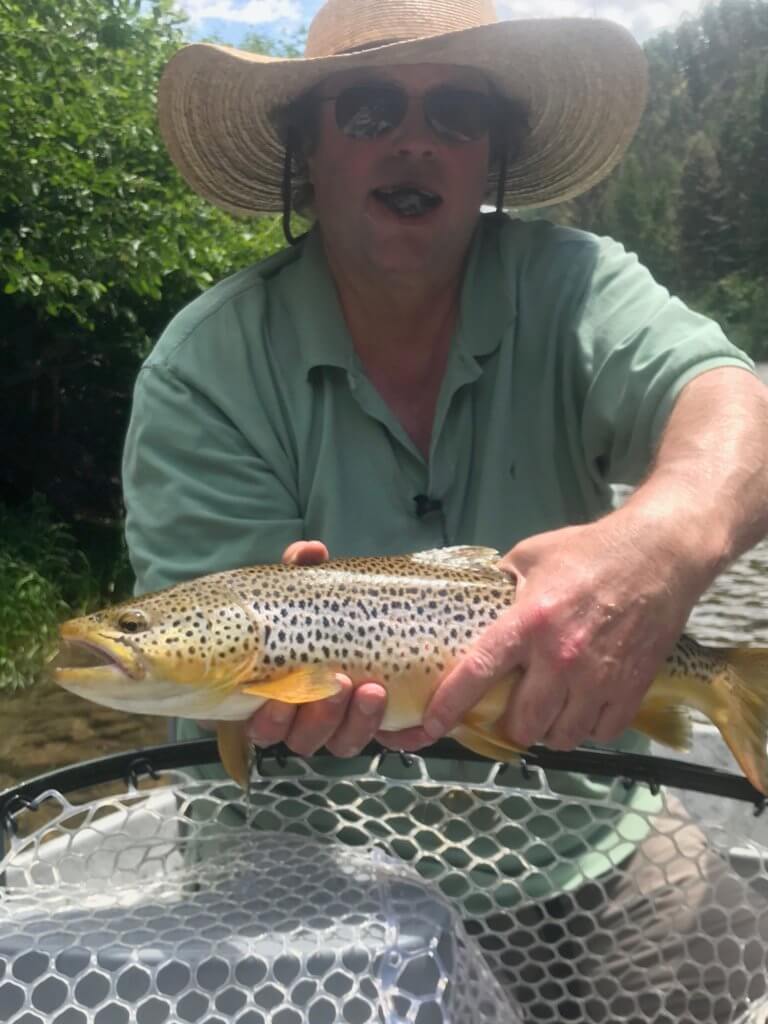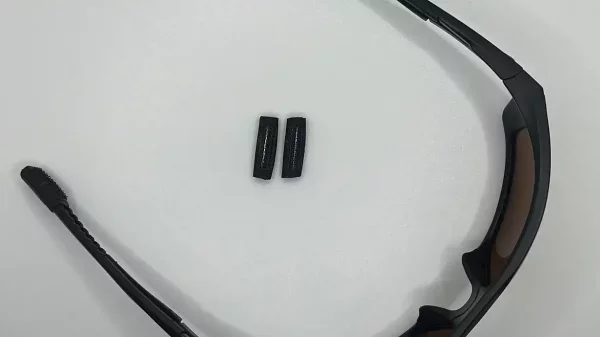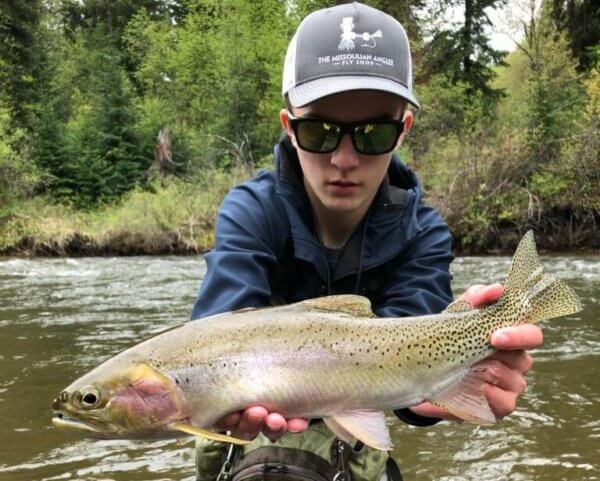This is so nerdy you won’t be able to stand it!
One of the more enjoyable things I get to do in a fly shop is look at rod handles. We see more broken rods than we care to, and with rod carriers allowing the reel to be stored on the rod, we get the handle on a few anglers when we spool up a new line, or shift lines from reel to reel.
Very few items of tackle can tell the tale that a cork rod handle can tell.
Not a fly box. They essentially look the same through their lifetime. They might acquire a scratch or two, but don’t really carry any depth.
Same with zingers, nippers, forceps.
Maybe an anglers boots, maybe. But sun-drying in the back of a pickup will prematurely age the best of equipment.
Or an old school vest, but so few use that conveyance, including me. They’re clutter traps, too hot and too heavy. Well, mine’s heavy. I can load a vest down with irrelevant gear, flies and gadgets faster than anyone. Unlike some anglers, I take no joy in being a minimalist. Try as I might, I can’t understand limiting yourself to one fly, or using a Tenkara rod with the classic tiny tackle box. I’ve been doing this for 50 years. I’ve accumulated some crap. By the slime on George Harvey’s boots, I’m going to carry it with me, needed or not.
Parenthetical Insertion. As a teenager and young adult, I idolized George Harvey. He was kind, generous, pompous and opinionated. He was the first college accredited professor in fly fishing, and I’m proud to say I’ve taught fly fishing on the university level. Not at George Harvey’s level, but at a university level. He designed the leader style I use 80% of my time on the water, and convinced Buck Metz to go into the dry fly hackle business. When I say By the Slime On George Harvey’s boots, I’m invoking the spirit of a Dry Fly Fisherman. There is no higher calling. His vest was crammed full with flies that he was always very generous with. When I’m wearing a vest, I’m not comfortable till it bulges.
Which is why I don’t wear a vest.
But I digress.
You can’t fake the rod handle.
Look at the handle of your favorite rod. If you’re lucky, it’s got a nice patina of dirt, with some spots of grime rubbed in. Probably some wayward Aquel, or the residue from a quick grab and grin. You recognize the unique color of the mud bank you slipped and fell down, using both hands to keep you from entering the river. I don’t miss felt soles when I think of how many times I entered the river on my ass.
That’s the first five years.
You start to learn about the quality of the cork after the first five years or so. Good cork is hard to come by, and even the best of cork may reveal flaws as it’s being shaped. Rod builders use filler to cover up the minor blemishes that naturally occur. This is when the filler begins to fall out, after 5-7 years of hard use. Some rod handles look like a leopard, with blemish spots abounding. But the tale is being told.
The handle starts to show slight signs of wear, specifically lighter areas of wear where the hand isn’t. Where the hand is normally placed has a darker color than the rest of the handle. Over time, the dirt is more compressed there, as well as put there more often.
Here’s a thought. You know those little pockmarks where the filler came out? You can fill ‘em the next time you slip and fall down a mud bank. At least they’re filled till the handle of your rod gets soaked. I usually give my reel and handle a rinse once every 4 times on the water, while untangling an errant cast from the tip top, or, even worse, casting so badly you put a half hitch between the tip top and the first guide. When you’re working on the tip of the rod, the handle of the rod tends to get wet. The deeper you’re wading, the more likely the dunking is.
Then find another mud bank.
As time goes by and the handle sees more use, the cork starts to get shiny as well. It’s difficult to describe, because how can all that accumulated “patina” shine? It’s the cork being compressed by usage, losing the tiny imperfections and taking on a reflective sheen. It takes a while to get to that point.
I love rod handles. They tell me so much about an angler. My conversations are much different with a clean, or even worse, still wrapped in cellophane handle. PLEASE! It’s not worse if you’re just starting. No one was born with a fly rod in their hand. But please, Please, PLEASE take the cellophane off the handle. It’s so much more comfortable, less slippery, and perhaps most importantly, nothing screams rookie more.
The conversation nerdifies with the tale the handle tells. Depending on patina, we may talk about tapering leaders, the latest flies, river conservation, why on God’s earth are we still using fiberglass in 2022, the difference between Aquel and Gink, and, if the handle has enough wear, and matches the owner, we may grouse about how it was so much better back when we were kids. We’re wrong- we just didn’t know any better. But it’s still a great conversation. I’ve solved the world’s problems several times over in fly shop conversation. It’s a great place to meet free spirits, big wigs, where the high and mighty and the low down, dirty and bad all contend with the same wind.
I’m always fascinated by who’s attracted to fly fishing, and why. I try not to be a navel gazer, but when you’re dealing with the highly stereotypical and un-PC classifications of people as bank presidents and mechanics, and all points in between, it’s absolutely fascinating to watch even a small part of their fly fishing journey. What do they want from this, what are they willing to give it?
The answer is in the rod handle.
This may not get past the editorial board. I try not to, but I judge people by their rod handle. I alluded to it before, and I assure you it’s not what you think.
As I said, you see all kinds in a fly shop. People regale me with stories of multiple 20” fish in a day out of Rock Creek. They talk about how worn out their line is. And I see the handle. 2 year’s wear, tops. It’s a 9’ 5 weight- it’s the go-to rod. I’m not going to question them closely about too much- the information I get will be hackneyed and exaggerated. Inflated and not tempered with experience.
Just like I did when I was trying to master this $#^&?!@ sport. If I caught one, I bumped it to two. Two was a passle. Three and I was over the moon. I memorized Stenonema Canadensis (fat lot of good it did me- they went and changed the classification) and used it in a sentence whenever I could. In short, I was just getting started. As said before, no one gets further without getting started.
The handle of my rod was worn then, but it wasn’t my doing. I was using the same rod my father learned with, and he deserves much of the credit for the patina.
It wasn’t hard to tell I wasn’t the only dirtier of that handle. You get so you can tell, you know.
The next handle I see is an IM6 Winston. It’s so worn, the cork has slightly shrank and the glue between the rings is visible. It’s so dirty it’s actually been rinsed off. On purpose! Not sanded, just rinsed, so the last few layers are diminished, and you can see the filler spots with a little more clarity. But it’s not clean, like a toddler in the bath. They’ve gotten wet, but getting to the base layer is too much work.
If you look closely, you see wear marks on the reel seat as well.
They’re of a certain age, the age when you had to spend $400 on a fly rod to get one that was any good. $400!!! That’s a lot of money. They did it once, they did it right, and no amount of hype, advertising, peer pressure or Google ads is making them change their mind.
That’s written on a ringed handle. The moisture is disappearing from the cork. Lots of sunshine. Lots of rain. Lots of use makes a handle look that way. You don’t see many of those.
So you ask, hows your fishing been? They might tell you they “took more than a couple, less than a few”. When you ask how big, it’s always maybe one over 15”.
I wish I’d videoed this exchange. An older customer is leaving the shop, and on the way out the door, I said, “Have good fishing.” He stopped, turned and looked at me. Formed his thoughts. Looked at me, completely deadpan. Said this, “You know, I used to go to Rock Creek as a young man. Fish all day, come home with a 16” trout, a couple 12’s and three or four 8-9” long. People thought I was a pretty good fisherman. But in these days of catch and release, I’m not sure I’m so good anymore.” And he walked out the door.
To this day, I don’t know if he was joking, if he was serious.
I do remember reading somewhere that a fish story without photographic evidence is just that, a story. Probably fictional.
When I was teenager, my youngest brother was fascinated by the size of fish. He had a Zebco De-Liar (the secret is in the name) which was a combination scale and tape measure. If you caught a fish when he was near, he measured its length.
You know what I learned from that? There’s a hell of a big difference between 14” and 16”, and 18” and 20”. Fish get bigger geometrically, they’re not just longer, they’re BIGGER. Like a lot. It was stunning (and annoying) how few 20” trout I caught. 20 inches is the trout benchmark. It’s tradition. They all looked like 20”ers, until that #@$%?)! De-Liar. 15.5”.
It was close.
Three years ago I had the chance to float the Clark Fork with John Gould, long time Missoula guide (and our rival so don’t go calling him! But we’d hire him in an instant!!!) and the 11 year old kid of a childhood friend. The childhood friend is a doctor AND intelligent, and his son Franco is frighteningly smart. The fishing was slow (Truth is, I was brutally hungover. Barely functioned till mid afternoon, and by then it was too hot) and John had the 11 year old in the front of the boat, and 7’ deep. He would catch a fish, and ask John how big it was. “14”, maybe and a half” This happened for 3-4 fish, and finally Franco says to John, “Yesterday, the other guide said those fish were bigger.”
I say this jestingly, but we’re lucky we didn’t crash the boat. John and I were laughing so hard. After a long, hard guffaw, John says. “I call ‘em as I see ‘em. Been doing this a long time.” So Franco rummages around in his vest, or John provides one, I don’t know, but a tape measure appears. Turns out John’s dead accurate on ACTUAL length.
Not fisherman’s length.
The De-Liar took most of that out. To quote Ed Zern, “Fishermen are born honest, but they get over it.”
When the ringed handle extends by saying they had a good day on the Bitterroot, I do my part and extend the conversation. What were you using? Any clouds? Where were you?
The handle tells me that any answers I get will be useful, but the last one is the important one.
Ya soften ‘em up before going for the gusto.
Parenthetical Insertion. NEVER tell a fly shop employee where you had good fishing, any further than “the upper Bitterroot” or “the middle of Rock Creek.” Because while we’re not actually trying to stick it to you, we’re happy to have a different answer! So within a day, we’ll reuse that info at least once, and over 3 days, twice.
But not more than that.
I’ve been in destination fly shops in New England and in Missoula. The number one question is “Where do I go fishing.” With all that entails.
When I worked in North Conway at a fly shop, we shared a building with Dick Stewart while he wrote his book series, Flies For Bass/Trout/Saltwater/Atlantic Salmon/Steelhead. Sharing a building means you get some of your flies in books. Thanks, Dick and Farrow. Dick had been the previous owner of the fly shop, and one day while chatting, he said he had a fly shop fantasy.
He had mentally picked the traditionally biggest, best time of the year, the Siphlonorus hatch. In the past, the shop had made over 100 walk-in sales in a day when the hatch was strong. Dick said at least half asked where the best place to fish was.
His fantasy? Send every angler to exactly the same rock. Give them all identical destinations, and then sit back and think about the chaos he’d created!! Cue fiendish laughter.
But we all know what it really would have been. It would have been a disaster on the river. It would have been everyone’s worst nightmare about opening day. 50 anglers in the same area would wreak havoc on the banks, bottom and through the environment.
Would it have ever happened?
Hell no.
Not enough parking spaces.
That idea has sat with me for a long time. That as a person utilizing the resource, I should try and do what I can to protect the resource. So when I’m in the shop, and it’s the first week of April, I’m trying not send every angler to the Bitterroot. Third week of June, and I’m looking for Rock Creek alternatives. We do the same with the fishing reports.
We all know the best Skwala hatch is the Bitterroot, and the best Salmon Fly hatch is Rock Creek. So they attract enough attention on their own. But here’s the thing. You’re in Missoula, there’s 300 miles of floatable river within an hour’s drive. The fishing is good wherever you go round here. No one will be deprived. As a responsible fly shop, we try to spread the usage around. Usually saying it won’t be as crowded. And it isn’t.
Maybe it makes us feel better as we use the resource.
PUBLIC STATEMENT – Find a conservation organization you feel you can support, and support it. I have been involved with conservation for 30 years. While it might not be as dire as the wingnuts would have you believe, it’s amazing what someone will try to do to a river when they think no one is looking. Strong talk is appreciated- money does the work.
Upon re-read, that’s pretty harsh.
But unfortunately accurate.
So find an organization that’s doing the job you would do if not previously engaged, and help them do the job you can’t. That’s not a criticism, it’s life. You do what you can when you can.
Again, so harsh. So true.
But try and put cold water conservation higher on the list.
Thanks.
I’m taking a little longer to spool the reel that came off that partially stained, ringed handle. I’ve been adroitly told his good day was on the lower Bitterroot. He wasn’t floating, so now I’m really interested. I obliquely ask in a couple of ways about firmer location details. I’m politely and deftly directed in different conversational directions.
Once in a while it pays off, and you get PRIMO info.
Did you really think I’m going to tell you?!?!
But knowing he’s been stingy with the locale, he feels honor bound to tell me about the hot fly. I can’t say anything right now, confidential you know, but I now have more than a couple in my box.
The handle had the rings of truth.
And the grime of usage.
The stains of time on the water.
The half cleaned look that says they noticed.
That can’t be faked.
–George Kesel

